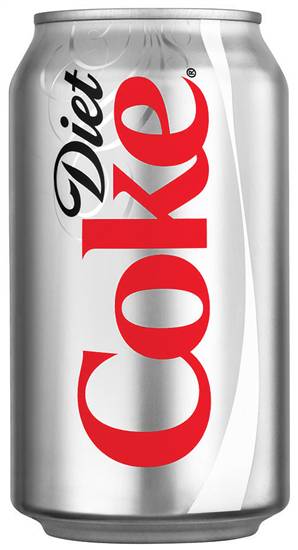
June 15, 2009 (Washington, DC) — People who use artificial sweeteners are heavier, more likely to have diabetes, and more likely to be insulin-resistant compared with nonusers, according to data presented here during ENDO 2009, the 91st annual meeting of The Endocrine Society.
Results show an inverse association between obesity and diabetes, on one side, and daily total caloric, carbohydrate, and fat intake, on the other side, when comparing artificial sweetener users and control subjects.
First author Kristofer S. Gravenstein, a postbaccalaureate researcher with the Clinical Research Branch at the National Institute of Aging (NIA), National Institutes of Health (NIH), said the association may reflect the increased use of artificial sweeteners by obese and/or diabetic study participants. "This is a cross-section study," Mr. Gravenstein told Medscape Diabetes & Endocrinology, "so there are limitations — we cannot say that artificial sweetener use causes obesity, we can say it is associated with it."
Increased Use vs Increased Glucose Absorption
Artificial sweeteners activate sweet taste receptors in enteroendocrine cells, leading to the release of incretin, which is known to contribute to glucose absorption. Recent epidemiologic studies in Circulation (2008;117:754-761) and Obesity (2008;16:1894-1900) showed an association between diet soda consumption and the development of obesity and metabolic syndrome.
This report tested whether participants in the Baltimore Longitudinal Study of Aging (BLSA), which began in 1958, differ in anthropometric measures, daily caloric intake, and glucose status, separating them into 3 different groups: artificial sweetener users, artificial sweetener nonusers, or controls.
A total of 1257 participants, with a mean age of 64.8 years (range, 21 - 96 years), had data on self-reported 7-day dietary intake, 2-hour oral glucose tolerance test (OGTT), and anthropometric measures. The major artificial sweetener consumed was aspartame, preferred by 66% of BLSA participants, followed by saccharin (13%), sucralose (1.0%), and combinations of the three (21%).
"In our study, we were actually able to isolate what type of sweetener was used at a certain point in time, as we used food diaries, and not food questionnaires," Mr. Gravenstein pointed out.
"When we first did this analysis, we found that people ate more fat before 1983, which is the year [of] a big increase in artificial sweetener consumption in the American population — it was actually when aspartame was approved and diet Coke was introduced," he explained.
As a result, the study further analyzed data from a subset of participants, starting in 1983. Compared with 550 people who did not use artificial sweeteners, the 443 people who did were younger, heavier, and had a higher body mass index (BMI), yet they did not consume more calories from people who did not use artificial sweeteners. Fat, carbohydrate, protein, and total caloric intake were not different between the 2 groups (users vs nonusers).
Furthermore, Mr. Gravenstein noted that people who used artificial sweeteners "were less likely to have a normal OGTT, or they were less likely to be diagnosed as having a normal glucose homeostasis."
In terms of glucose status, the impaired glucose tolerance (IGT), and/or impaired fasting glucose (IFG), the data show that artificial sweetener users "were not different than the prediabetics, ie, they had the same prevalence of prediabetes," he said, adding that "in our population, people who used artificial sweeteners were twice as likely to have diabetes, 8.8% compared to 4.4% for controls."
Analyzing the data further, the investigators focused on a subpopulation, in which fasting insulin values were available from 374 nonusers and 311 artificial sweetener users. The users had a higher fasting glucose levels, higher fasting insulin levels, and a higher measure of insulin resistance, as measured by the homeostasis model assessment, but glycosylated hemoglobin A1C levels were similar between the 2 groups.
Alternative Hypothesis and Clinicians' Role
The researchers suggest an alternative hypothesis, that artificial sweeteners modulate the metabolic rate through enteroendocrine cells, therefore contributing to the development of diabetes and/or obesity. However, this hypothesis needs further testing in longitudinal analysis and intervention studies, said the investigators.
"Also, it could be that artificial sweeteners are causing diabetes, or it could be that there is a higher use of them because a lot of physicians actually recommend people to use artificial sweeteners to prevent diabetes...." Mr. Gravenstein said. The researchers are planning to address this question with a prospective analysis.
"This is a very interesting study," Rachel C. Edelen, MD, a pediatric endocrinology practitioner at the Aspen Centre in Rapid City, South Dakota, told Medscape Diabetes & Endocrinology in an interview. "I diet screen all my patients, and they are not drinking enough milk. Usually, they replace the milk with something else, sweetened tea, Gatorade, etc, not just water. With my type 1 diabetics, the information they were getting from the hospital was to drink diet pop. But who even goes into the hospital and drinks pop?" she wondered.
Support for this study was provided by the Intramural Research Program of the National Institute on Aging of the National Institutes of Health. Dr. Edelen and Mr. Gravenstein have disclosed no relevant financial relationships.
Lähde: Medscape Medical News

1 kommentti:
At any rate, I liked some of the researcher cartoons on VADLO search engine!
Lähetä kommentti